Jaguar XJ13 - Greatest "What if" Story in Motorsports History
During the 1950s, Jaguar was the most successful manufacturer to compete in the famous 24 Hours of Le Mans. It won “the ultimate race“ 5 times in 7 years, which was an unbelievable achievement for a relatively small company in those days. The key to Jaguar’s success were their C and D-Type racing cars which featured advanced technology, lightweight, and good aerodynamics.
Jaguar wanted a proper endurance racing car
However, in the ’60s, Jaguar didn’t have a proper endurance racing car. Their Jaguar E-Type sports car was very popular on the market and the company was focused on producing as many as they could. But, Sir William Lyons, the company’s founder and CEO, wanted another Le Mans victory…

Jaguar C Type and D Type replica
Development started from the engine
So, in the early 60’s, Jaguar started the construction of a prototype racing car with great ambitions. The project started with the engine, and Jaguar’s engineers agreed that it should be a big V12 engine with four camshafts and 6 carburetors with 60 degrees angle between the cylinder banks. It was an advanced concept at the time and for the company which, by that moment, only had smaller 6 cylinder XK engines. However, the new engine had great power (around 450 bhp) from 5 liters of displacement, and it fitted well with Lucas fuel injection which upgraded the power to over 500 bhp.
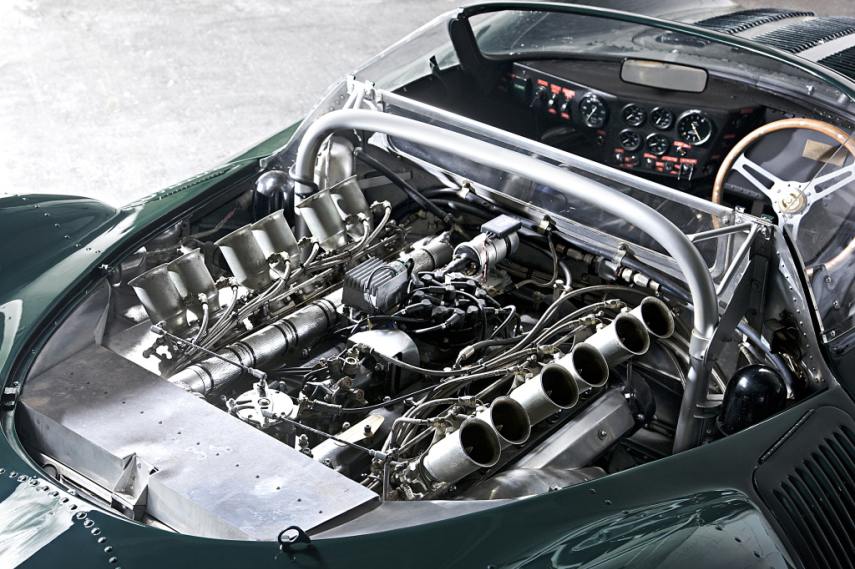
Jaguar 5.0 V12 engine with Lucas fuel injection, good for over 500 bhp
Beautiful, lightweight, with a very sleek body
The next step was the chassis, and Jaguar tried hard to implement all the latest achievements in one car. The monocoque construction was used with the engine behind the driver and transaxle gearbox behind it. This gave the prototype a mid-engine layout for the perfect weight distribution and handling. An interesting detail was the connecting of the engine block and transmission to the rear suspension and aluminum chassis, which meant that these two components were integral parts of the construction. This approach allowed the prototype to have a lower profile and better torsion rigidity.
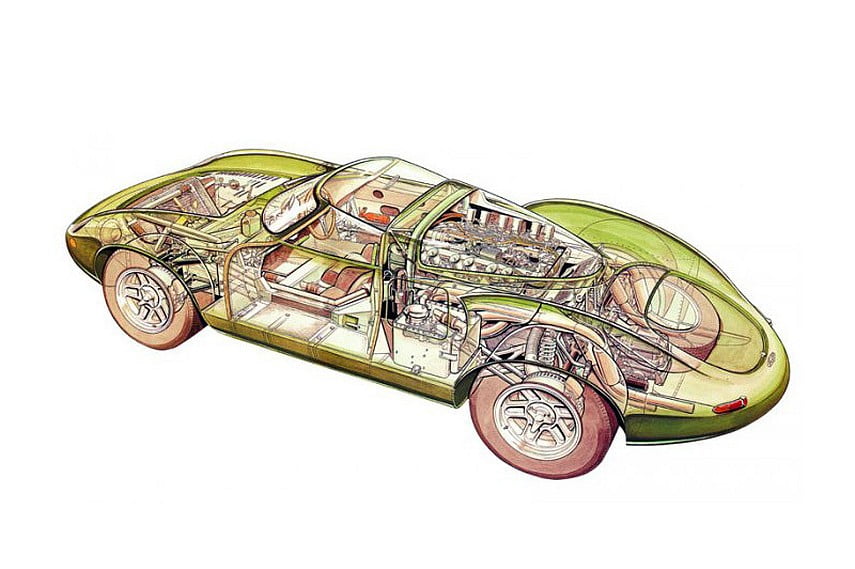
Cutaway of XJ13 shows advanced construction
Next on the list was the body, and the well known Jaguar designer and aerodynamic expert Malcolm Sayer took the matter into his hands again. He already had considerable experience with designing beautiful and aerodynamically effective race cars from his work on the Le Mans-winning C and D Type. He penned a gorgeous aluminum body for the new racer which had a distinctive Jaguar front end and tail lights from E-Type. Since the car was completed, it was given the name – XJ13 which was short for Experimental Jaguar No 13.
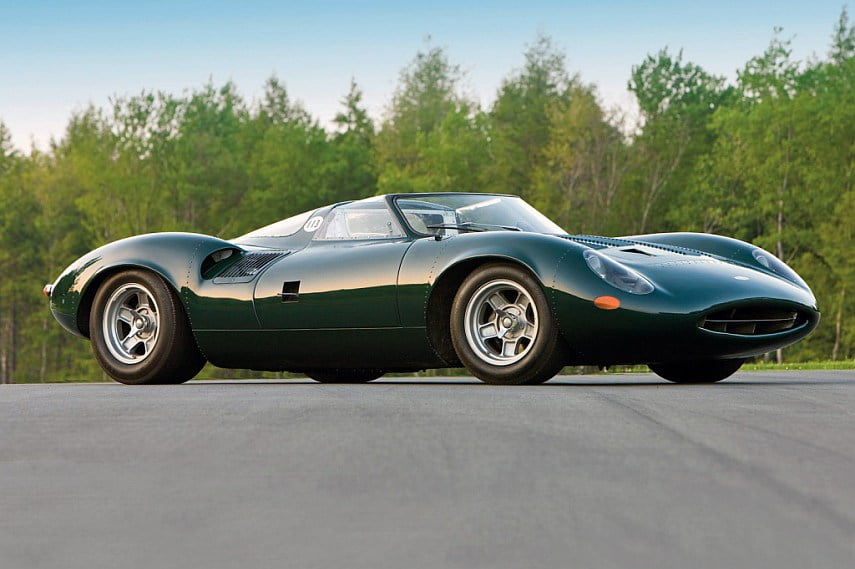
Great proportions and low profile of XJ13
The victim of bad circumstances
The car was finished in 1965 and tested immediately. In the hands of Norman Dewis, the Jaguar test driver, XJ13 showed enormous potential and even achieved a few track records during the testing sessions. Of course, the car needed lots of adjustments but the basis for a world record-beating racing prototype was there. The aerodynamics were spot on, but the handling was less than perfect with some oversteer. During 1966, after some further testing, lots of issues were sorted out and the XJ13 was nearly ready for its premiere. However, the circumstances beyond the reach of Jaguar’s racing team proved to be fatal for XJ13.
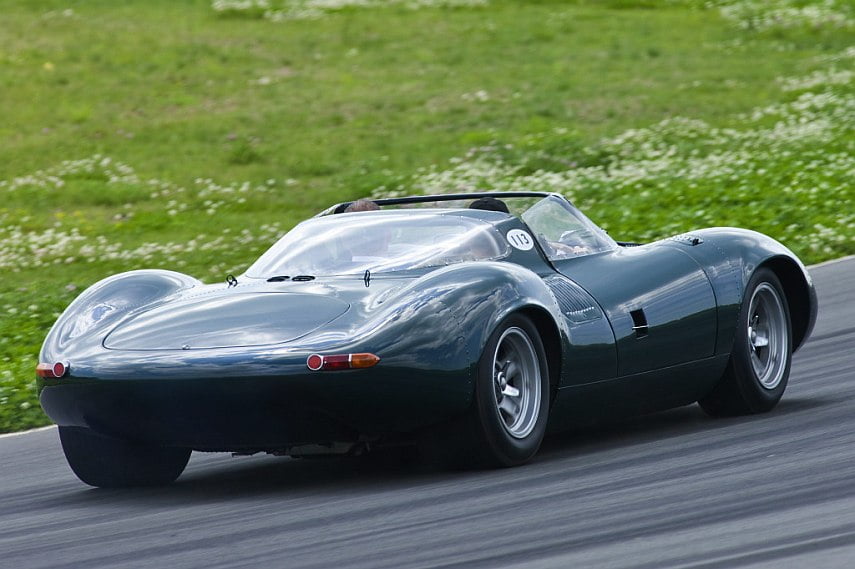
Jaguar XJ13 replica at speed
XJ13 was almost finished when things turned around
In late 1966, Jaguar merged with BMC which meant that Jaguar was not an independent manufacturer anymore, and the new owner didn’t want to invest in possible racing projects. The XJ13 was practically finished but BMC’s focus on restructuring and sales resulted in the racing program being put on hold. The Jaguar team thought that XJ13 would race soon, but in 1967, FIA changed the rules for prototype class which made XJ13 obsolete. From 1967, all new<prototype cars had a maximum of 3.0 liters of displacement and XJ13 had 5.0 which made it unable to compete. Jaguar’s engineers even proposed tuning down the 5.0 V12 to 3.0 displacements but it was too expensive to make those changes in a short period of time, and the bosses at BMC didn’t even consider that proposition. In just one moment, a perfectly good, fast, and promising race car was abandoned and left for dead.
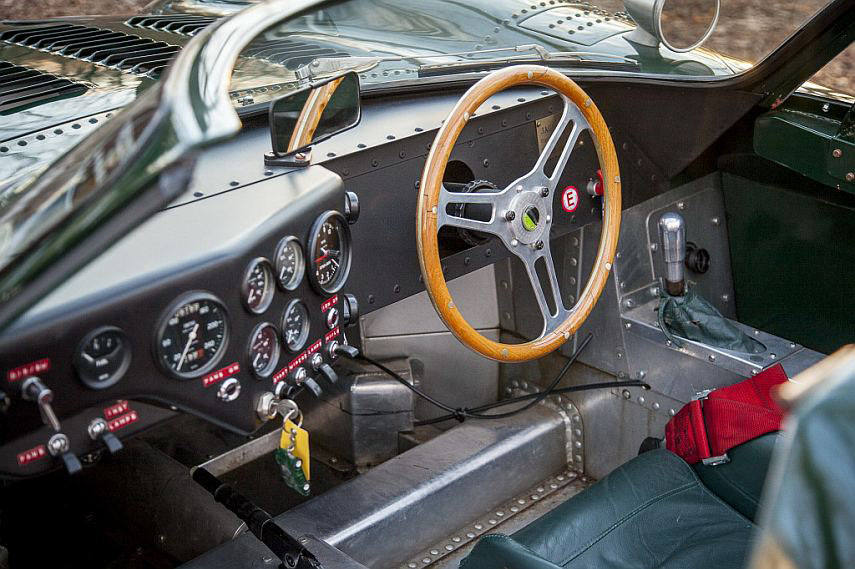
Jaguar XJ13 interior
XJ13 was abandoned by factory, crashed, but not forgotten
The whole project was still kept secret and it looked like the XJ13 would never see the light of day, but in 1971, Jaguar introduced the E-Type Series 3 with 5.3 V12 engine which was based on the racing 5.0 V12 from XJ13. That same year, Jaguar showed the ill-fated prototype during filming of a commercial and the motorsport public was shocked that the car exists and that it was so advanced but never got the chance to race. During that filming, XJ13 had crashed badly and Jaguar officials even thought to scrap the car, but eventually it was restored and placed in the Jaguar Heritage Museum in Coventry.
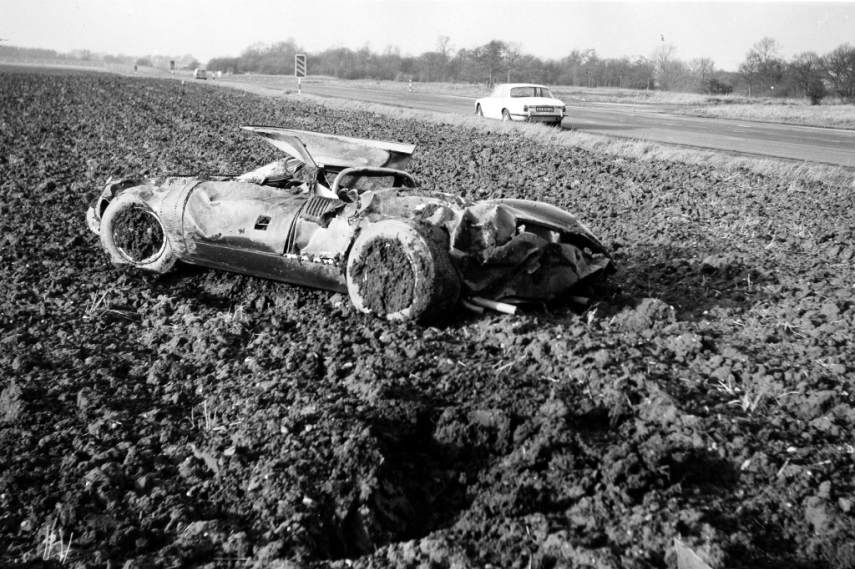
Crash in 1971 in which Xj13 was badly damaged
Never had a proper chance in the racing world
The ghost of missed opportunities haunted Jaguar until XJR-9 was created in the late ’80s. Interestingly, the prototype XJR-9, constructed in cooperation with TWR, had a 7.0 V12 engine derived from 5.0 V12 in XJ13, which just goes to show how advanced the thinking behind the whole XJ13 project was.
However, the gorgeous British racing green XJ13 never got a proper chance to show its potential on the race track, and we can surely say that the history of motorsport would certainly be very different if this car had gotten a chance to perform along the greats like Ford GT40, Ferrari P4, Lola T70, and Porsche 917. Over the years, it remained a sort of a mystery for enthusiasts and even a few replicas were built. At one point, Jaguar was even offered 6 million dollars for the original prototype, but the Heritage Museum refused to sell.
Video : The beauty of XJ13 in motion at Goodwood Festival Of Speed, 2015
Photo: autowp.ru, supercars.net.






